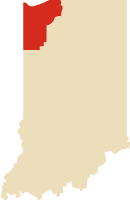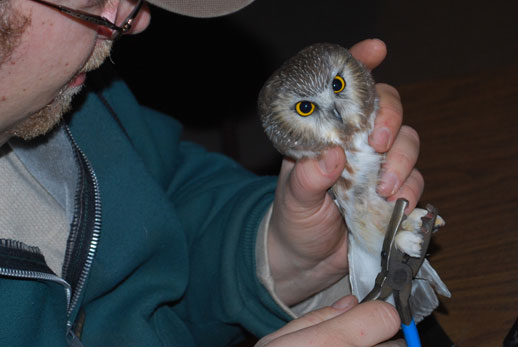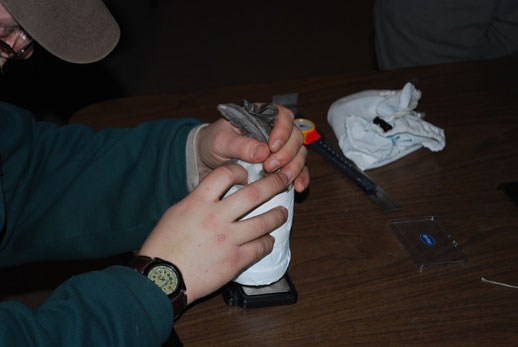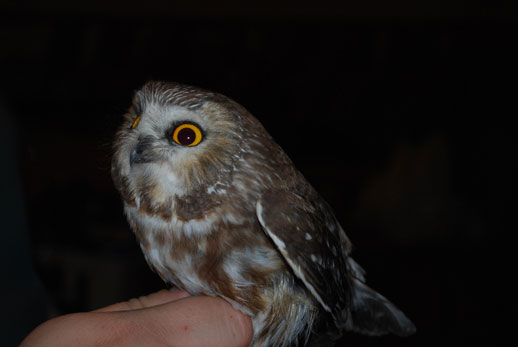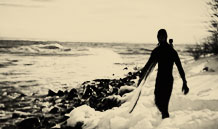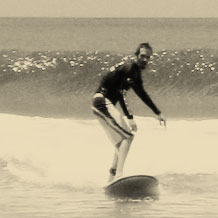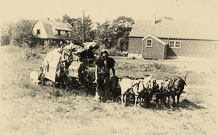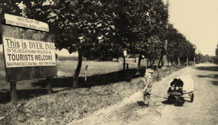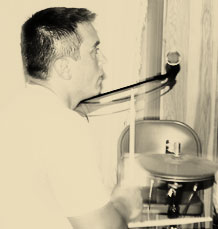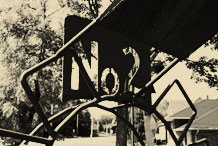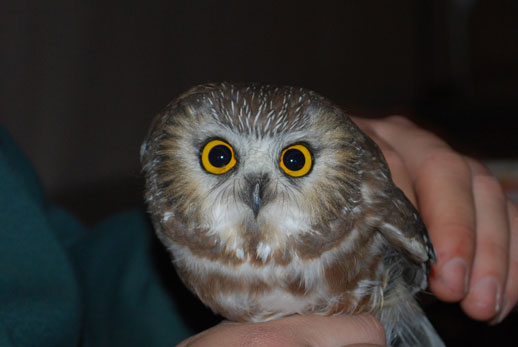
Our little friend. [photo by Mr. Leather]

Tracking The Region's tiniest owl species
September 29, 2010
If the title didn’t catch your attention, I suspect the image above did the job.
Early last fall, I visited the Indiana Dunes State Park for an afternoon of bird watching. I’m still a novice birder, so there’s a ton of Indiana birds I haven’t set eyes on yet. My partner in crime, fellow Rambler and bird watcher Charissa Byczko, and I talked at the park about how we never see owls when we go birding. It’s likely due to our lack of experience, but we decided to inquire at the park’s nature center on the way out.
We met Brad Bumgardner, one of Dunes State Park’s naturalists. He’s an avid bird watcher and easily filled us in how to find owls by checking the ground for pellets rather than craning our necks to seek them in the trees. Apparently, they tend to roost in the same tree day after day. Brad also suggests using recordings of owl calls to identify what species may be living in your area.
The exciting revelations didn’t stop at owl pellets. Brad told us about a program the Dunes is participating in through Project Owlnet to track the migration of the elusive Northern Saw-Whet Owl. We learned we had a shot at seeing one up close if we came back during one of the public demonstration nights. I was instantly sold. At home, I told my husband we had to check it out, but in all of my excitement, I muddled my explanation, and he had no idea what I was talking about. What he was heard was something like bandsaws and wet owls. Huh?
During our first foray, we arrived on a rainy night and watched a video introduction on the Northern Saw-Whet Owl in the nature center. Brad explained to us the procedure for capturing the owls, which consists of specialized nets and Owl-E, a box that plays an amplified call of the Saw-Whet Owl, attracting the birds to the netted area.
The nets are erected each evening and checked hourly. Those who visit the park have the opportunity to check the nets with the naturalists to look for captured owls. Each visit to the nets is extremely exciting, though if you intend to check it out, be sure to wear shoes that can withstand mud. If there’s been any rain, your shoes will not leave the park looking pretty. After two visits to the nets, we called it a night. Sad that we weren't able to see any owls, but not discouraged enough to forgo a second shot!
Unfortunately, my expectations prior to our first visit weren’t too realistic. I thought the owls would be flying all over and just waiting to get netted. The reality is there is not much action on evenings that are windy or rainy. Cloud cover also seems to have an effect on whether they are on the move. Even on the most perfect, cool, calm and clear evening, there is no guarantee you will have the pleasure of seeing one of these little birds. It is truly worth the the wait and patience, though.
My second try was around Halloween. I just knew we would get to see one that night. I was convinced. But, alas, I was wrong. As you can imagine, I was even more disappointed but felt I couldn’t give up just yet. If I could talk my husband into going one more time, we would see one. Really we would!
The following week, while my husband’s father visited from New York, we wanted to take him out to do some cool stuff. I said to my husband, “Hey, I bet your dad would enjoy seeing a Saw-Whet Owl!” I was not denied.
So, the very next evening, the three of us ventured to Dunes State Park, but after checking the nets twice, we felt discouraged. It was late, we hadn’t eaten dinner, and my husband and I both had to work in the morning. Since this was our third visit to the park without seeing any owls, I think Brad felt some sympathy for us. He told us we could grab some food in town, and he would call us if they caught one on their next check. We drove to Popolano’s restaurant, just a few minutes away. Soon after our waitress brought us our food, I got the call I was waiting for. We packed our food to go and raced back to the park.
We arrived at the nature center a little after 9, and I could barely believe my eyes when Brad pulled a tiny owl no bigger than his fist, with big yellow eyes, out of a little cloth bag. It was one of the most beautiful little creatures I had ever seen. I can’t even describe in words how excited I was to finally see one.
Brad and his assistant measured the owl’s beak and wings, took its weight and were able to determine the owl was a little female. It was hard for me to believe, based on her size, that she was an adult bird about 2 years old. A blacklight held over the inside of the bird’s wing revealed her age by showing which feathers were old and which where new. The new feathers glowed a bright pink under the blacklight.
Earlier that evening, we were told that folks could “adopt” any bird that was captured for just $25. The adoption fee helps cover the cost of running the program and repairing and replacing nets. Brad told us one of the $220 nets can be destroyed instantly if a deer accidentally wanders into it. We were happy to contribute and decided to "adopt" our little owl. We were thrilled to find out that we will be notified personally if “Owlivia” is captured again at any of the other sites throughout the country that are participating in the program.
>All in all, it was an incredible experience. If you like wildlife and birds or have an obsession with all things cute, visit the Dunes this fall during its Saw-Whet Owl banding program. The park allows informal banding visits during mid-October through mid-November. Folks can call the nature center for updates on the day they plan to visit, as banding is dependent on weather conditions. Brad usually can forecast the banding schedule about three days out.
Formal presentation nights are scheduled for Saturdays: 7 p.m. Oct 23, 8 p.m. Oct. 30 and 7 p.m. Nov. 6. Updates are also available at http://www.twitter.com/indianadunessp.
To learn more about Project Owlnet and its efforts to monitor Northern Saw-Whet Owls, visit http://projectowlnet.org.
